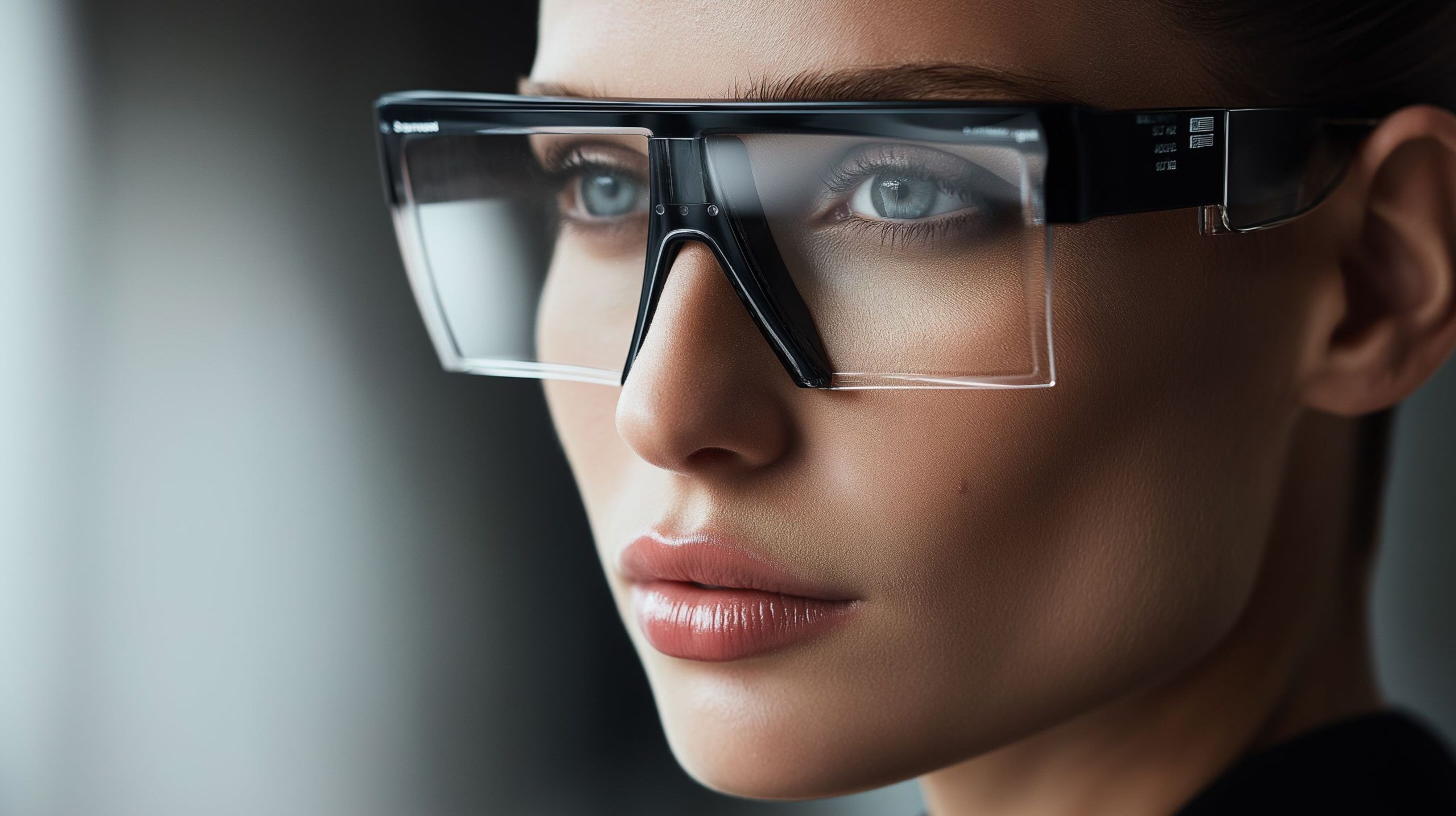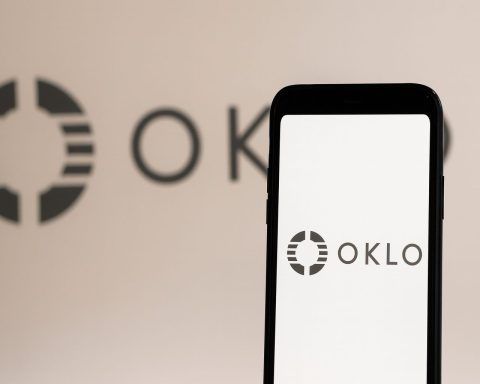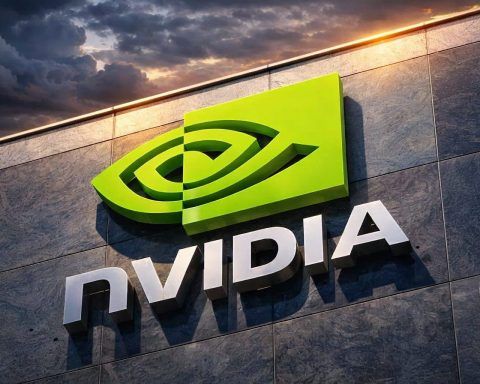- Apple Vision Pro, unveiled in 2023 and shipping in early 2024, uses dual 4K micro-OLED displays totaling 23 million pixels, is powered by an M2 chip plus a custom R1 processor, offers eye and hand tracking with about 12 ms passthrough latency, an external battery delivering around 2 hours, and starts at $3,499 in the US.
- Meta Quest 3, released in October 2023, is a standalone VR/MR headset priced at $499 for 128GB, with 2064×2208 per-eye LCD (~25 pixels per degree), ~110° field of view, 6DoF inside-out tracking, full-color passthrough, and pancake optics that are 40% thinner.
- Microsoft HoloLens 2, launched in 2019 at roughly $3,500, offered a 52° field of view and 2k×1k per-eye resolution with eye and hand tracking, but production ended in 2024 with no announced replacement and continuing software support through 2027.
- Magic Leap 2, released in late 2022 for $3,299 base (enterprise $4,999), features a 70° FOV, 2.5 million pixels per eye at 120 Hz, dynamic dimming, and a tethered compute pack for enterprise use.
- Samsung’s Project Moohan, announced for 2025, uses a Snapdragon XR2+ Gen 2 processor, aims for up to 4.3K per eye resolution with color passthrough AR, includes eye and hand tracking, a wired external battery, and a premium Android XR OS ecosystem with Google services, likely priced above $1,000.
- Sony’s SRH-S1, shipping in early 2025, is an enterprise MR headset with a flip-up design, powered by Snapdragon XR2+ Gen 2, dual 4K micro‑OLED displays, and a price around $4,750, bundled with a stylus and a finger-ring input system.
- Google and Samsung showcased a stealth Android XR AR glasses project in 2026 described as Android XR glasses, which offload processing to a paired phone, support real-time translation and a “Memory” feature, and integrate Gemini AI within the XR experience.
- Varjo XR‑3 and VR‑3, first released in 2021–2022, target enterprise with ultra-high fidelity up to 70 pixels per degree at the center, dual displays (about 2880×2720 per eye), 115° FOV, 90 Hz, LiDAR passthrough, and a price range of $5,000–$6,500.
- HTC Vive XR Elite, released March 2023 and commonly priced at $1,099 (often discounted to around $899), is a standalone VR/MR headset with 1920×1920 per-eye resolution, ~110° FOV, color passthrough, a detachable battery, diopter adjustment, and PC tethering options.
- Ray‑Ban Hypernova glasses from Meta are rumored for late 2025, with an estimated price of $1,000–$1,400, featuring a built‑in microdisplay in the right lens, a 12‑MP camera, neural wristband finger gestures, and smartphone pairing for notifications and apps.
A New Reality Revolution
The worlds of augmented, virtual, and mixed reality – collectively known as XR – are on the cusp of a major leap in 2025 and 2026. Tech giants and startups alike are racing to release the next generation of smart glasses, VR headsets, and MR headsets, blurring the lines between our physical and digital lives. From lightweight AR glasses that overlay information onto your surroundings, to immersive VR headsets for gaming and metaverse experiences, to cutting-edge mixed reality devices that seamlessly blend both, the coming wave of products promises to transform how we work, play, and connect. Both consumer and enterprise markets are buzzing: everyday users can look forward to more powerful yet affordable headsets, while businesses anticipate specialized devices for training, design, and productivity. “Today marks the beginning of a new era for computing,” Apple CEO Tim Cook proclaimed at the launch of Apple’s Vision Pro, calling it “spatial computing” – a technology “years ahead and unlike anything created before” Apple. As we enter this new era, let’s break down the major categories of devices and compare the most important confirmed and rumored models that will dominate the XR landscape through 2025 and 2026.
AR Glasses: Augmented Reality in Your Eyewear
Augmented reality (AR) glasses are designed to keep you anchored in the real world while overlaying digital info – think futuristic eyewear that can display messages, directions, or 3D holograms in your field of view. These range from stylish consumer smart glasses to high-tech enterprise headsets:
- Consumer AR Glasses: Companies are striving to make AR glasses that look and feel like regular eyewear. Meta has seen surprise success with its camera-equipped Ray-Ban smart glasses (over 1 million pairs sold in <2 years Entrepreneur), and now Meta is reportedly prepping an upgraded pair codenamed “Hypernova” that will include a display in the lens. Slated for late 2025, these Ray-Ban Meta glasses with a screen are envisioned as a “smartphone alternative” on your face, capable of running apps, displaying maps, recognizing hand gestures, and snapping photos Entrepreneur Entrepreneur. The added tech won’t be cheap – Meta employees say this advanced model could cost around $1,000–$1,400 (roughly 4–5× the price of the current Ray-Bans) Entrepreneur Entrepreneur. It will likely pair with a neural wristband controller for subtle finger-gesture controls Entrepreneur, though basic use via touch and voice will work too. Meta CEO Mark Zuckerberg has hinted at the massive potential here, noting demand for the earlier Ray-Bans “is still outpacing our ability to build them” Entrepreneur.
- Google & Samsung’s AR Ambitions: Not to be outdone, Google and Samsung have teamed up on a stealthy AR glasses project targeting 2026 for release Xrtoday Xrtoday. A prototype was recently demoed by Google’s AR head, impressing onlookers with its sleek, lightweight design and capabilities like real-time language translation and even a “memory” feature to help find misplaced items Xrtoday. Uniquely, these glasses offload processing to your smartphone, streaming data “back and forth” so the glasses can remain slim and comfortable Xrtoday. “These glasses work with your phone… allowing the glasses to be very lightweight,” explained Google’s Shahram Izadi Xrtoday. This phone-tethered design could make them more affordable than bulky standalone headsets. In fact, insiders describe them as “Android XR” glasses built by Samsung under the Google partnership Xrtoday, effectively Google’s answer to Apple’s vision for everyday AR wear. We’ll have to be patient – by all accounts, Google and Samsung are taking the time to “get it right” rather than rush to market Xrtoday.
- Apple’s Long Game: Apple’s own dedicated AR glasses (separate from its Vision Pro headset) remain shrouded in mystery. According to Bloomberg’s Mark Gurman, true Apple AR glasses are still “several more years” away Xrtoday. Apple has reportedly run internal experiments and focus groups on smart glasses Entrepreneur, but no product is imminent. In the interim, Apple is exploring ways to bring AR features to existing products – for example, adding intelligent camera capabilities to the Apple Watch or AirPods as a sort of “AR lite” solution Xrtoday. So while “Apple Glasses” rumors persist, don’t expect a direct competitor in this space from Apple before 2026. The company’s AR focus for now is on the Vision Pro mixed reality headset (more on that later).
- Enterprise AR Headsets: On the enterprise side, optical see-through AR headsets like Microsoft’s HoloLens and Magic Leap pioneered the field. These devices have transparent lenses that overlay holograms onto your view – invaluable for engineers, surgeons, and frontline workers who need hands-free info or remote guidance. Microsoft’s HoloLens 2 (launched 2019 at ~$3,500) offered a self-contained AR experience with a then-best-in-class 52° field of view, eye and hand tracking, and a Windows-based platform. However, its hefty size (566g) and niche market meant adoption remained limited. By late 2024, Microsoft ceased production of HoloLens 2 with “no sign of a replacement” on the horizon Theverge. In an email, the company signaled a “last time to buy” for HoloLens 2 and said it will instead support mixed reality via software and partner devices Theverge. (Microsoft continues working on a militarized HoloLens variant for the U.S. Army’s IVAS program, but a HoloLens 3 for general enterprise is uncertain Theverge.) This effectively leaves a void that others are eager to fill.
- Magic Leap 2 has stepped up as one of the most advanced enterprise AR headsets available. Released in late 2022, Magic Leap 2 (ML2) was designed explicitly for business use – and it shows in the specs. It boasts a 70° field of view (a significant jump from the ~50° of its predecessor), 2.5 million pixels per eye at 120 Hz refresh Xrtoday, and a unique dynamic dimming feature that can selectively darken the lenses to solidify virtual objects even in bright environments Xrtoday Magnopus. Priced at $3,299 for the base model Xrtoday, ML2 is lighter and more ergonomic than the old version (about 250g for the visor, less than half the weight of HoloLens 2 Magnopus). It uses a tethered “compute pack” clipped to your pocket for processing, which allowed Magic Leap to keep the headset itself compact. Enterprise customers can opt for pricier editions ($4,099 Developer Pro or $4,999 Enterprise) with added software tools, warranties, and support Xrtoday Xrtoday. Magic Leap touts ML2 as “the industry’s smallest and lightest” AR device in its class, aiming for comfortable all-day use on the job Magnopus Magnopus. Use cases range from 3D design visualization and on-site construction guidance to medical training – essentially, scenarios where having interactive 3D content in your real-world view can boost productivity and understanding.
- Other Notable AR Players: Several other companies are pushing AR eyewear forward. Vuzix, for example, produces safety-rated smart glasses for industry (like the Vuzix Shield), using tiny micro-LED projectors and waveguide lenses to deliver heads-up data to workers Ledinside. Startups like Xreal (Nreal) have found a niche in consumer “AR media” glasses – their Xreal Air glasses (around $379) don’t do full spatial mapping, but they plug into your phone/laptop and act as a private 201″ virtual screen for watching movies or playing games Amazon Xreal. Xreal Air has been called “the world’s best-selling AR glasses” by its maker Xreal, showing there’s demand for lightweight glasses that basically give you a portable personal theater. And of course Snap continues to iterate on its Spectacles – the latest development kits actually include AR displays and sensors for creators to experiment with, though Snap has yet to launch a consumer AR display-glasses product.
In short, AR glasses in 2025–26 will span from subtle everyday specs to heavy-duty headsets. Consumers can expect the first generation of true display-equipped glasses (from Meta and possibly Samsung/Google) that bring basic augmented reality to daily life – directions, notifications, and photo/video capture without picking up a phone. Enterprises, meanwhile, will rely on devices like Magic Leap 2 (and any successors) as HoloLens alternatives for high-end AR training and remote collaboration. The holy grail remains stylish, mass-market AR glasses that can do it all – and every big player from Apple to Meta is betting that within a few years, we’ll be wearing our computers on our faces.
VR Headsets: Immersion Taken to the Next Level
If AR keeps one foot in reality, virtual reality (VR) headsets dive fully into digital worlds. These enclosed goggles block out your surroundings and replace them with a 360° virtual environment. VR is already a consumer staple for gaming and entertainment, and it’s increasingly used in education, simulation, and design. The coming years will bring higher fidelity and more comfort to VR headsets across the board:
- Meta Quest Series – Leading the Charge: Meta (formerly Oculus/Facebook) continues to dominate consumer VR. The newest flagship, Meta Quest 3, hit shelves in October 2023 and is touted as “the world’s first mass-market mixed reality headset” Fb. Standalone and wire-free, the Quest 3 delivers a 30% leap in visual resolution and double the graphics performance of Quest 2 thanks to the new Snapdragon XR2 Gen 2 chip Fb. Its two LCD panels (2064×2208 per eye) provide a sharp “4K+” image (~25 pixels per degree) Fb Fb, and new pancake optics made the visor 40% slimmer than the previous gen Fb for greater comfort. Impressively, Quest 3 isn’t just for VR – it features full-color passthrough cameras that let you see the real world in front of you, enabling blended AR experiences (you can double-tap the side to switch between full VR and mixed reality modes) Fb. From a use-case perspective, Quest 3 tries to let you do everything – play intense VR games, overlay virtual screens on your living room, or simply video chat with virtual avatars. At $499 for the 128GB model, it’s priced for mainstream adoption Fb. Early reviews have been very positive: Tom’s Guide even declared that at $499, Quest 3 is “the best VR/AR headset for most people” Tomsguide. It offers an accessible entry point compared to pricey rivals, while still packing advanced features like inside-out tracking (no external sensors needed), reliable hand tracking, and even experimental mixed reality game modes. What’s Next from Meta? In late 2024 Meta also introduced a lower-cost Quest 3S variant at $299 (with pared-down specs) Fb, aiming to broaden the audience. Looking further ahead, Meta is already deep into development of the Meta Quest 4, expected in late 2025 or 2026 Metamandrill. According to industry reports, the Quest 4 may come in two models – a standard “Prismo Low” and a premium “Prismo High” – the latter potentially including advanced face and eye tracking to drive more realistic social telepresence Metamandrill. We can also anticipate a new Snapdragon XR chipset powering it, since Meta and Qualcomm have a close partnership on custom VR chips Fb. In short, Meta’s roadmap suggests a continual refinement of standalone VR: lighter, faster, and more social. (Notably, Meta’s previous attempt at a high-end pro headset, the Quest Pro in 2022, saw limited success and large price cuts – the Quest 4’s “premium” model will likely integrate those lessons, delivering Quest Pro features at a more palatable price.)
- Console and PC VR: Sony & Valve: For gamers who prefer tethered headsets with dedicated hardware, Sony’s PlayStation VR2 is a major player in 2025. Launched in February 2023 for the PS5, PS VR2 brought true next-gen specs to console VR: an OLED HDR display (2000×2040 per eye) capable of 90–120Hz, 110° field of view, inside-out tracking (4 onboard cameras), and even eye-tracking with foveated rendering for sharper graphics where you’re looking Playstation Playstation. It also introduced advanced haptic feedback – not just in the new Sense controllers (adaptive triggers, etc.), but a rumble motor in the headset itself to make impacts feel immersive Playstation. Priced at $549.99 Playstation (more than the PS5 console), PS VR2 is aimed at hardcore gamers and delivers stunning visual fidelity – “4K HDR” visuals that truly are a “next-gen gaming experience” according to Sony Playstation. The downside: it’s wired to the PlayStation 5 via USB-C, limiting mobility. Still, for those in the PlayStation ecosystem, it unlocks rich VR titles (Horizon: Call of the Mountain, Resident Evil 8, Gran Turismo 7, etc.) with console-quality graphics. Sony hasn’t signaled any new VR hardware beyond this for now; PS VR2 will likely be the console VR standard for a few years. On the PC side, Valve’s Index headset (released 2019) remains beloved by enthusiasts for its top-notch tracking and wide FOV, but it’s showing its age. Rumors have long swirled about a Valve “Index 2” codenamed “Deckard”, possibly a standalone or hybrid PC headset. While Valve has made no official announcement, dataminers have uncovered references in SteamVR code to new controllers and features, suggesting something is brewing Mixed News Mixed News. In late 2024, reports indicated Valve was tooling new VR controllers (code-named “Roy”) for mass production – fueling hopes that Deckard might finally materialize in 2025 Mixed News. If it appears, a Valve Index 2 could be a “Steam Deck for your face,” potentially capable of standalone operation for your Steam library or wireless PC streaming Mixed News. Given Valve’s pedigree, gamers are excited by the prospect, but as of 2025 it remains an unconfirmed device.
- Standalones & Alternatives: Aside from Meta, a number of other companies offer standalone VR headsets. HTC, once a VR pioneer, launched the Vive XR Elite in early 2023 – a compact $1,099 standalone headset that doubles as PC VR goggles. It features 1920×1920 per-eye resolution, color passthrough cameras (for mixed reality), and a modular design that lets you remove the battery pack and wear it like lightweight “glasses” (tethered via USB to a power source) Xrtoday Techradar. The XR Elite didn’t quite dethrone the Quest in popularity, and HTC even cut its price to ~$899 in some regions Roadtovr, but it remains an option for those who value its smaller form factor and PC connectivity. Another notable brand is Pico (owned by ByteDance/TikTok), which sells the Pico 4 headset in Europe and Asia. The Pico 4 (launched late 2022 at around $425) is similar in specs to Quest 2/3 and has gained traction where Meta headsets aren’t available. A Pico 5 model is expected eventually, though details are scarce. In the enterprise VR segment, Varjo continues to offer the Ferraris of VR headsets. The Finland-based company’s Varjo XR-3 and VR-3 headsets (priced in the $5,000–$6,500 range) deliver mind-blowing visual fidelity – “human-eye resolution” of up to 70 pixels per degree in the center, thanks to dual displays (a focused micro-OLED and a peripheral LCD). The XR-3 also provides high-quality passthrough and LiDAR, making it a mixed reality device suitable for training simulations, aerospace design, and other professional use cases where clarity is paramount. While too expensive for consumers, Varjo’s tech showcases what ultra-high-end VR/MR can do (for instance, flight simulators where pilots read fine text on virtual gauges). As we head into 2025/26, Varjo and similar enterprise VR makers will keep pushing the envelope, though their market remains niche.
- Upcoming VR Hardware: The year 2025 could be relatively quiet for entirely new VR launches, as many companies laid their groundwork in 2023–24. That said, one big debut we know is coming is Samsung’s return to VR. Samsung (in partnership with Google and Qualcomm) is developing a premium mixed reality headset, code-named “Project Moohan,” set to release in 2025 Mixed News Mixed News. This device will run Google’s new Android XR operating system and pack cutting-edge silicon – the Snapdragon XR2+ Gen 2 chip, which offers ~20% higher CPU and 15% higher GPU clocks than the chip in Quest 3 Mixed News. It’s expected to support up to 4.3K resolution per eye (versus ~3K per eye on Quest 3) Mixed News, though other specs (display type, etc.) are still under wraps. What we do know is Samsung is using advanced pancake optics for a slim profile Mixed News, and the design includes a wired external battery pack – much like Apple’s Vision Pro – to keep the headset light on the head Mixed News. Samsung’s device will have color passthrough AR and an array of interaction options: hand tracking, eye tracking (for foveated rendering and UI), and compatibility with VR controllers as well as keyboards/mice for productivity Mixed News Mixed News. In essence, “Project Moohan” is shaping up to be an Android-powered rival to the Vision Pro, aimed at both immersive VR and mixed reality applications. Samsung previewed the headset behind closed doors (a prototype was shown at MWC 2025, receiving positive buzz Xrtoday), but the final product name, price, and exact release date remain unknown Mixed News Mixed News. Analysts expect it to be priced above $1,000 given the high-end positioning Mixed News – so likely competing in the premium tier rather than against the budget-friendly Quests. Other prospective VR devices include whatever HTC is cooking up next (there were rumors of an HTC “Vive Focus Elite” with a new XR2+ chip, but HTC instead released a modest Vive Focus Vision in 2024 with older silicon Mixed News). There’s also the intriguing Immersed Visor – a startup project aiming to deliver a super-light productivity headset with micro-OLED displays – and the quirky Shiftall MeganeX 8K from Panasonic’s spin-off, which has been in the works as an ultra-compact PC VR glasses set. And in an unexpected crossover, Sony itself (beyond PlayStation) is entering the enterprise XR fray: it collaborated with Siemens to develop the Sony SRH-S1, a flip-up mixed reality headset for industrial use, shipping to enterprise clients in early 2025 for ~$4,750 Mixed News Mixed News. The SRH-S1 uses the latest Snapdragon XR2+ Gen 2, twin 4K micro-OLED displays, and even comes with novel controllers (a stylus and a finger ring) for precision input in professional applications Mixed News. Sony also teased a variant called “XYN” for 3D content creation use cases Mixed News. While not aimed at consumers, Sony’s move highlights that VR/MR hardware isn’t just for gaming – it’s expanding into serious enterprise solutions.
Overall, VR headsets in 2025–26 will get incrementally better – crisper visuals, stronger processing, and more mixed reality capabilities – but also more diverse. We’ll have everything from $300 entry-level headsets to $3,000 professional rigs. Notably, the line between “VR” and “MR” is blurring as more headsets include pass-through cameras for augmented reality. That trend leads us to the next category: mixed reality devices that truly straddle both worlds.
MR Headsets: Merging Real and Virtual Worlds
Mixed reality (MR) headsets are devices that mix digital content with your real environment in a cohesive way – they can function as full VR headsets, but also let you see and interact with the real world via cameras or transparent displays. In practice, many high-end “VR” headsets now offer MR features (through passthrough video), so the distinction can be fuzzy. Here, we’ll focus on the latest headsets that emphasize a mixed reality experience:
- Apple Vision Pro: No MR device has garnered more attention than Apple’s Vision Pro, which Apple dubs “the first spatial computer.” Unveiled in mid-2023 after years of secrecy, the Vision Pro is Apple’s ultra-premium MR headset that lets users seamlessly move between augmented reality and virtual reality. With a twist of its Digital Crown, you can dial immersion up or down – from seeing your real room with digital widgets floating around (AR), all the way to being fully enveloped in a virtual space (VR) Theverge. The hardware is, by all accounts, groundbreaking. It features dual 4K micro-OLED displays (one for each eye) packing an astonishing 23 million pixels total, which makes for a retina-like display density with virtually no screen door effect Apple. An array of cameras and sensors (over a dozen) enables precise hand tracking, eye tracking, and 3D mapping of your environment Theverge – so much so that no controllers are needed at all. You simply look, tap your fingers, or speak to interact with apps Apple. Apple also integrated a unique external display on the front called EyeSight to show a digital view of the wearer’s eyes to people nearby (to reduce the social awkwardness of opaque goggles) Apple Theverge. Under the hood, the Vision Pro is powered by a Mac-class M2 chip plus a custom R1 chip for sensor processing, ensuring that the passthrough view of the world is delivered with ultra-low latency – Apple claims just 12 milliseconds, so the outside world feels real-time Apple. All of this tech comes in a glossy aluminum and glass body that Apple calls “the most advanced personal electronics device ever.” In fact, Apple’s VP Mike Rockwell said creating Vision Pro required inventing new techniques “across nearly every facet” of the device, resulting in a “standalone spatial computer in a compact wearable form factor” that is “the most advanced personal electronics device ever” built Apple. By Apple’s own admission, Vision Pro is years ahead of anything else Apple. Early hands-on reports back this up: The Verge’s reviewer was blown away by the “best video passthrough… on the sharpest VR displays any normal person will ever come across,” though he also noted you’re still aware it’s an artificial view of reality Theverge. The level of detail and immersion – watching 3D movies on a virtual 100-ft screen, seeing your photos panoramically wrap around you, or FaceTiming with life-size avatars – is unlike any prior device Apple Apple. However, all this magic comes at a cost – literally. The Vision Pro starts at $3,499 in the U.S. Apple, putting it firmly in the luxury/professional category. It’s also initially launching only in the U.S. (in early 2024) with other countries later in 2024, so by 2025 many global markets will finally be getting their first taste of it Apple. The device uses an external battery pack tethered by a cable (slipped in your pocket) to achieve about 2 hours of use per charge, or it can plug into wall power for longer sessions Mixed News. Comfort-wise, Apple engineered a tailored fit system and offers custom Zeiss prescription lens inserts (for an extra fee) to accommodate glasses wearers Tomsguide. As a first-generation product it’s not without trade-offs – it’s relatively heavy (~1.3 lb or ~590g), and wearing any headset for long stretches (even one as well-balanced as Vision Pro) can be fatiguing. But Apple is betting that the “Wow” factor and productivity potential will outweigh these concerns for early adopters. “Vision Pro introduces us to spatial computing,” said Tim Cook, comparing its significance to the first Mac and first iPhone in starting a new paradigm Apple. Time will tell, but many experts truly see it as a glimpse of the future. Apple is reportedly already working on follow-ups: a revision with an M5 chip is rumored for late 2025 Mixed News, and a more affordable “Vision” model (sans Pro) is also in development targeting a 2025 launch if they can hit cost goals Mixed News Mixed News. For 2025–26, though, the current Vision Pro will stand as the benchmark for MR headsets, both in capability and price.
- Meta’s Mixed Reality Ecosystem: While Apple shoots for the ultra-high-end, Meta is taking a more accessible mixed reality approach across its devices. We’ve discussed Meta Quest 3 in the VR section – importantly, it doubles as a capable MR headset. With its full-color passthrough and depth sensing, Quest 3 can integrate virtual objects into your real space (e.g. your coffee table becomes a playing field for a game, or you have life-size virtual screens in your room) Fb Fb. Meta calls it “breakthrough mixed reality” and indeed it’s one of the first MR devices under $500. Though not as sophisticated as Vision Pro (Quest 3 lacks the eye tracking and high-res displays), it’s often described as mixed reality for the masses. Early user feedback on Quest 3’s MR has been that it’s fun but still a bit version 1.0 – the passthrough quality is good but obviously digital, and the AR game/library ecosystem is nascent Arstechnica. Still, Meta clearly sees MR as the future of the Quest line. In 2022 Meta launched the Meta Quest Pro at $1,500 (later dropped to $999) as a bridge to professional mixed reality. Quest Pro added face and eye tracking, higher resolution passthrough, and a sleeker design, targeting remote collaboration and creative work. However, it didn’t gain much traction, and Meta has since repositioned its XR strategy around the Quest 3 and upcoming Quest 4. We might see some Pro features return in a Quest 4 “Pro” model (e.g. the rumored Quest 4 “Prismo High” with face tracking Metamandrill). Additionally, Meta is fostering an ecosystem beyond its own hardware: it’s licensing its Horizon MR platform to partners like Asus and Lenovo to build third-party MR headsets Mixed News. Both Asus and Lenovo have confirmed they’re developing devices running Meta’s software – Lenovo focusing on a productivity-oriented mixed reality headset, and Asus on a gaming-focused one under its ROG brand Mixed News. These could appear in 2025 or 2026, giving enterprises more choices (e.g. a Lenovo MR headset tightly integrated with PC workflows) Mixed News. Meta’s strategy seems to be to make its MR software ubiquitous, even if through partnerships, to compete with the likes of Apple.
- Samsung & Google “Moohan”: We already detailed Project Moohan in the VR section, but it truly is a mixed reality device at heart. Samsung’s upcoming headset will support fully immersive VR as well as AR passthrough, akin to Apple’s approach Mixed News. It will run standard Android apps (in a projected screen mode) and also specialized XR apps – Google is even baking in its popular services like Maps and YouTube in mixed reality versions Mixed News. A big emphasis is the integration of Google’s latest AI (Project Gemini assistant) into the XR experience Mixed News. The fact that Samsung is opting for eye tracking, hand tracking, and even a neckband battery shows they’re targeting high-end mixed reality use cases (productivity, virtual monitors, etc.) rather than just gaming Mixed News. When it launches in 2025, expect Samsung’s device to be one of the key challengers to Vision Pro – likely offering a bit less finesse in exchange for a lower price and openness (working with Android phones, etc.).
- Other MR Devices: A few other headsets deserve mention in the MR category. The Lynx R-1, a French startup’s headset, is a small standalone MR device that began shipping to Kickstarter backers in 2023. It uses a unique lens design (half-mirrors) enabling a compact form, and it’s aimed at developers/enterprise with a price around $600–$800. Lynx’s vision is an open, privacy-conscious mixed reality platform – it remains to be seen if they can carve a niche alongside the giants. Meanwhile, as noted, Sony is dabbling in MR for enterprise with its SRH-S1 (flip-up design for quick reality access Mixed News), and Panasonic’s Shiftall MeganeX is attempting a super-light high-resolution headset (though with limited field of view). On the more experimental end, Meta gave a sneak peek of an AR “Orion” prototype in 2024 – holographic glasses that are far thinner than current headsets Entrepreneur. Those are not products yet, but show the direction: eventually MR might shrink from goggles to glasses.
One can see that mixed reality is becoming the ultimate endgame – the ability to merge virtual and real content fluidly is where all these devices are converging. As of 2025, Apple’s Vision Pro sits at the apex of MR experiences (with an equally lofty price), while Meta’s Quest 3 makes basic mixed reality widely accessible. Samsung and Google are entering the ring with their own spin on premium MR, and various specialized players are targeting enterprise needs. For consumers, the hope is that features pioneered in $3000 headsets today will trickle down to $500 headsets in a few years – much like how technologies in early smartphones eventually became standard.
Below, we consolidate the key products discussed – both released and expected – into a comparison table. This table highlights the major details and differences at a glance, from specifications and prices to the target use cases of each device.
Comparison Table: 2025–26 Smart Glasses & XR Headsets
To help you scan the landscape, here’s a summary of the most prominent confirmed and rumored devices in the AR/VR/MR space for 2025–2026. We include both consumer-focused and enterprise-focused products, across AR glasses, VR headsets, and mixed reality devices:
| Product (Company) | Category | Release (Status) | Price (USD) | Notable Specs & Features | Platform / Compatibility |
|---|---|---|---|---|---|
| Apple Vision Pro (Apple) | Mixed Reality (AR/VR) | Early 2024 (US; int’l 2024–25) | $3,499 | Dual 4K micro-OLED displays (23M pixels) Apple; M2 + R1 chips; color passthrough; eye/hand/voice tracking (no controllers) Apple; visionOS with iOS app compatibility; external battery (2 hrs) Mixed News; high-end build (aluminum & glass) | Apple visionOS ecosystem (requires iPhone/Apple ID; runs iPad/iOS apps) Apple Apple |
| Meta Quest 3 (Meta) | VR / Mixed Reality | Oct 2023 (released) | $499 (128GB) | Standalone XR headset; Snapdragon XR2 Gen2 (2× GPU of Quest 2) Fb; 2064×2208 per-eye LCD @ ~30PPD Fb Fb; ~110° FOV; full-color passthrough (10× resolution of Quest 2) Fb; 6DoF inside-out tracking; hand tracking; pancake optics (40% thinner) Fb; Touch Plus controllers (tracked by onboard cams); no eye/face tracking | Meta Quest platform (Android-based OS); supports Quest Store apps and PC VR (wireless Link/AirLink); experimental mixed reality APIs |
| Meta “Quest 4” (Meta) | VR / Mixed Reality (rumored) | Late 2025 or 2026 (expected) Metamandrill | ~$300–500 (std); higher for premium | Next-gen Quest likely in two models (“Prismo Low & High”) Metamandrill; expected next-gen Snapdragon XR chip; OLED displays possible; premium model to add face & eye tracking for social presence Metamandrill; lighter design and more AI features (personalized content via onboard AI) Metamandrill | Meta Quest platform; backward-compatible with Quest apps; premium model aimed at prosumers (enterprise telepresence, etc.) |
| Ray-Ban “Hypernova” Glasses (Meta) | AR Smart Glasses | Late 2025 (rumored) | ~$1,000–1,400 Entrepreneur Entrepreneur | Stylish Ray-Ban glasses with built-in microdisplay (visual HUD in right lens) Entrepreneur; runs Meta’s Android-based OS; can display notifications, maps, media; 12MP camera for photos/video; voice and touch controls + neural wristband for finger gestures Entrepreneur; audio speakers in frames; all-day form factor (looks like regular Wayfarers) | Pairs with smartphone (likely required for heavy processing) Xrtoday; part of Meta’s Reality Labs ecosystem (integrates with Facebook/WhatsApp, etc.) |
| Google/Samsung XR Glasses (Google & Samsung) | AR Smart Glasses | 2026 (prototype demoed) Xrtoday | N/A (TBD, likely high-end) | Ultra-slim AR glasses built by Samsung for Google Xrtoday; uses phone tethering for compute Xrtoday (streams data from Android phone to glasses); features include live translation, visual search, object tagging (“Memory”) Xrtoday; binocular micro-displays for see-through AR; onboard cameras for scanning and tracking; very lightweight, everyday design (more like normal glasses) | Runs Android XR OS (integrated with Android phones) Xrtoday; will support Android app extensions for AR; likely ties into Google services (Maps, Lens, Assistant) |
| Magic Leap 2 (Magic Leap) | AR Headset (Enterprise) | Sept 2022 (released) | $3,299 (Base) Xrtoday; $4,999 (Enterprise) | See-through AR headset (visor + compute pack); 65–70° FOV AR optics Magnopus; 2.5M pixels per eye @120Hz (1440p class) Xrtoday; dynamic dimming lenses (can block 99.7% ext light) Magnopus; inside-out tracking (SLAM) + spatial mapping; 12MP RGB camera + IR sensors; single hand controller (optically tracked) Magnopus; weight 248g (visor) Magnopus; runs Lumio OS (Android-based) | Open enterprise AR platform; dev tools for C#, Unity, Unreal; use cases: healthcare, engineering, remote assist. Not a consumer device (sold B2B) |
| Microsoft HoloLens 2 (Microsoft) | AR Headset (Enterprise) | Nov 2019 (released; discontinued 2024) Theverge | ~$3,500 (when available) | See-through AR headset (visor design); ~52° FOV holographic lenses; 2k×1k per-eye resolution @ 60Hz; eye tracking, hand gesture tracking (fully articulated); Qualcomm Snapdragon 850 SoC; inside-out 6DoF tracking; shared hologram collaboration via Mesh. Note: Production ended in 2024 with no successor announced Theverge. Support continues until 2027 Theverge. | Windows Mixed Reality platform (UWP apps); runs Windows 10-based OS; enterprise use (industrial training, military IVAS program, etc.). No new consumer apps forthcoming (Microsoft pivoting to software partnerships) Theverge. |
| Samsung “Project Moohan” (Samsung/Google) | Mixed Reality Headset | 2025 (confirmed in dev) Mixed News | > $1,000 (est.) Mixed News | Premium Android XR headset (standalone); Qualcomm Snapdragon XR2+ Gen 2 chipset Mixed News (20%+ faster CPU vs Quest3); supports ~4K+ per-eye resolution Mixed News; pancake lenses for slim design; high-res color passthrough for MR Mixed News; eye tracking (for foveated render/UI) Mixed News; hand tracking + controller support; automatic IPD; external battery pack for comfort (wired) Mixed News; likely Gemini AI assistant integration Mixed News; focus on both immersive apps & productivity (Android app compatibility) Mixed News. | Android XR (Google) platform Mixed News; runs Google apps natively (YouTube, Maps in MR) Mixed News; likely Galaxy ecosystem tie-ins. Aimed at prosumers and developers (direct competitor to Vision Pro in functionality). |
| HTC Vive XR Elite (HTC) | VR / Mixed Reality | March 2023 (released) | $1,099 (now ~$899) | Standalone VR/MR headset; 1920×1920 per-eye LCD @ 90Hz Xrtoday; ~110° FOV; full-color passthrough camera; detachable battery (makes headset ~240g as glasses); Snapdragon XR2 Gen1; 6DoF inside-out tracking; hand tracking; two VR controllers included; diopter dials for vision adjustment. Converts to tethered “glasses mode” (light front-only) via USB-C to PC or phone. | HTC Vive platform (Android OS + Viveport store); also supports SteamVR when tethered to PC. Geared toward enthusiast consumers and enterprise demos. |
| Sony PlayStation VR2 (Sony) | VR Headset (Console) | Feb 2023 (released) | $549.99 | Tethered to PlayStation 5 (single USB-C); dual OLED HDR displays (2000×2040 per eye) Playstation Playstation; 90–120Hz refresh; ~110° FOV; inside-out tracking (4 cameras on headset); eye-tracking for foveated rendering Playstation; rumble feedback in headset; PS VR2 Sense controllers with adaptive triggers + haptics; 3D audio support. Designed for seated/standing VR gaming with high fidelity graphics. | PlayStation 5 platform; runs PS VR2-exclusive games and experiences. Not compatible with PC or other consoles. Targets console gamers seeking premium VR content. |
| Valve “Index 2 (Deckard)” (Valve) | VR Headset (rumored) | 2025+ (unannounced) | N/A – likely high-end | Successor to Valve Index (2019) – rumored features: standalone capability with wireless PC streaming Mixed News; inside-out tracking (no base stations); advanced controllers (code-named “Roy,” with gamepad-like features) in development Mixed News; improved displays (higher FOV, resolution, refresh); focus on PC gaming integration (Steam library on the go). Valve has hinted via code leaks but no official specs yet. | SteamVR / SteamOS platform; expected to support all SteamVR content (potentially running on-device or via PC). Aimed at VR enthusiasts and gamers – Valve’s play to match Meta’s standalone prowess while keeping PC power available. |
| Varjo XR-3 (Varjo) | Mixed Reality (Enterprise) | 2021 (released) | ~$6,495 + sub. | Ultra-high-end XR for enterprise/simulation; dual displays per eye (one bionic display at 70 PPD focus, one at 30 PPD peripheral); effectively ≈2880×2720 per eye clarity in center; 115° FOV; 90Hz; video passthrough MR with low latency; inside-out tracking (or SteamVR tracking option); eye tracking (20/20 gaze accuracy) for analytics and foveation; supports various input (controllers, gloves, etc.). Requires high-end PC. | Varjo Reality Cloud / SteamVR; used in aerospace, automotive design, pilot training, medical visualization. Not a consumer device – requires enterprise IT integration and comes with annual software licensing. |
| Snap Spectacles (Gen 4) (Snap) | AR Glasses (Dev Kit) | 2021 (limited release to devs) | N/A (not sold) | Prototype AR sunglasses with dual micro-displays (transparent waveguides); ~26.3° diagonal FOV; dual RGB cameras, 2.5D hand tracking; voice controls. Very limited battery (~30 minutes). Offered to AR creators for Lens development, not general sale. (Snap’s next-gen consumer Spectacles with AR are still TBD.) | Snap Lens Studio platform; works with Snapchat app. Illustrative of Snap’s AR research, but not a consumer product yet. |
(Table sources: device official specs and announcements Apple Fb Xrtoday Playstation Entrepreneur Xrtoday, and reported rumors for upcoming devices Mixed News Metamandrill.)
Notes: “Release” denotes the launch timing or expected timeframe. Prices are base MSRP for the lowest-end configuration at launch (for unreleased products, estimated range if known). Feature lists are abbreviated; many devices have additional capabilities and accessories. Rumored devices’ details are speculative and subject to change. Consumer devices are generally standalone (except PS VR2), whereas some enterprise devices require a PC or compute pack. Platform refers to the operating system or ecosystem – e.g. Apple’s visionOS, Meta’s Quest platform, etc. Compatibility indicates what other systems or content the device can work with.
Outlook: Blending Realities for Everyone
By late 2025 and into 2026, we’ll see the XR industry hit an inflection point. The big bets on mixed reality made by Apple, Meta, Google, Samsung, and others will begin to filter into consumers’ hands. Experts believe the competition will spur rapid improvements. Already, Meta’s CEO has argued that their approach will bring XR to the masses faster – “demand is still outpacing our ability to build them,” Zuckerberg said of their popular Ray-Ban glasses Entrepreneur – while Apple is content to start at the ultra-high-end and trickle features down over time. We can expect prices to gradually come down as components scale up in production (for instance, pancake lenses and microdisplays should get cheaper). Indeed, industry analyst Ming-Chi Kuo predicts Apple is prioritizing a more affordable Vision model by 2025 to complement the pricey Vision Pro Mixed News.
In the consumer space, VR gaming will continue to thrive – devices like Quest 3 and PS VR2 have solidified a market of millions of users, ensuring a steady stream of games and content. But the real growth area is likely mixed reality experiences: imagine playing chess on your real coffee table against a holographic opponent, or having your smartwatch apps float in mid-air around you. These scenarios are becoming realistic as hardware like Quest 3, Vision Pro, and Project Moohan push MR to wider audiences. By 2026, we might see early killer apps for MR – perhaps virtual monitors replacing physical displays for work, or AR fitness and creative tools that integrate with our homes.
For enterprises, ROI is key – and the new devices promise better training simulations, design collaboration in 3D, and remote expert guidance. A field technician wearing Magic Leap 2 or a similar headset can already get live overlays of wiring diagrams or call a remote expert who “draws” AR annotations in their view. As hardware gets lighter and more capable, these use cases should expand. The discontinuation of HoloLens 2 Theverge shifts enterprise AR leadership toward firms like Magic Leap and whatever emerges from Meta’s partnerships with Lenovo/Asus Mixed News. Notably, enterprise buyers often value continuity and support over flashiness – so they will watch how well these new platforms are supported over time (one reason Microsoft’s retreat caused some jitters).
One challenge will be content and software maturity. All the advanced hardware means little without compelling, user-friendly experiences. Apple is seeding visionOS with familiar iPad apps in 3D and wooing developers to create new ones Apple. Meta has years of VR content and is now adding mixed reality APIs for Quest. Google/Samsung will leverage the huge Android app ecosystem, though making 2D phone apps enjoyable in AR might be tricky. We may also see convergence – for example, Microsoft is bringing Windows experiences to Meta’s headsets (Microsoft even announced plans to support Windows 11 streaming on Quest) Patentlyapple, and Unity/Unreal engines are making it easier to build cross-platform XR apps.
Another factor is societal: will people wear these devices for extended periods? The Vision Pro review from The Verge bluntly noted the “tradeoffs” of comfort and the question of whether people want to “look at the world through screens” for long stretches Theverge Theverge. Early adopters are enthusiastic, but mainstream users might be slower to embrace face-worn computers until devices become nearly as light and convenient as glasses. The tech community is optimistic that we’ll get there – components like efficient microLED displays, better batteries, and perhaps even AR contact lenses are on the horizon. For now, 2025’s crop of devices will continue to refine the balance of immersion, comfort, and price.
In summary, the XR race is entering a pivotal phase. We have a clearer view of what’s possible: astounding mixed reality as shown by Vision Pro Apple, truly wearable AR in development from Google and Meta Xrtoday Entrepreneur, and solid VR entertainment from the Quest and PlayStation ecosystems. The next two years will be about iterating and expanding access – making these experiences more affordable and commonplace. As consumers, it’s an exciting (if confusing) time: those who want to jump in now have a wide menu of options, and those who prefer to wait can be assured that what’s expensive today will likely be cheaper and better tomorrow.
One thing is certain: the blending of our physical and digital lives is set to accelerate. Whether it’s for work, play, or connection, smart glasses and mixed reality headsets are poised to redefine personal tech much as the smartphone did a decade ago. The spatial computing revolution has begun, and 2025–2026 will show us just how far – and how quickly – this technology can evolve. As Tim Cook said, “just as the Mac introduced us to personal computing, and iPhone introduced us to mobile computing, Apple Vision Pro introduces us to spatial computing” Apple. In other words, the devices in this report are the first steps into a new realm of possibility – one where the only limit is how seamlessly and creatively we can merge the real with the virtual.
Sources: Official product announcements and spec sheets Apple Fb Playstation Xrtoday, technology news outlets (The Verge, Wired, TechCrunch, CNET) for hands-on impressions and company news Theverge Theverge, and credible industry analyses for upcoming devices Mixed News Xrtoday. All citations are included inline for reference.







